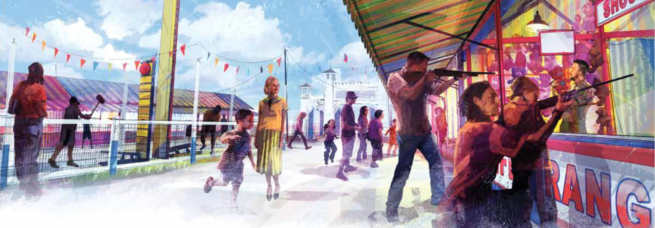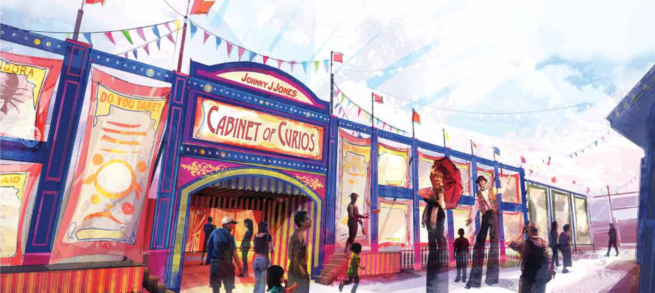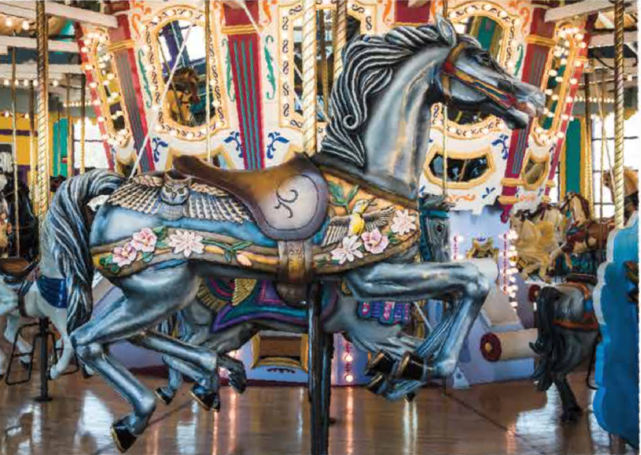June 18, 2021
The Fort Edmonton relaunch begins in summer 2021
Fort Edmonton Park has been closed for almost three long years and many Edmontonians are eagerly anticipating the re-opening. The Fort Edmonton Park Enhancement project is a $165-million investment from all three levels of government, and the Fort Edmonton Foundation. With all the refurbishments and enhancements complete, the new Fort Edmonton experience boasts a new front-entry plaza where visitors can get gifts and coffee, a stunning new Indigenous Peoples’ experience called the Indigenous Pavilion that explores the rich history of Canada’s first people, and a beautiful new 1920s-style midway expansion.

In addition to the funding provided, Fort Edmonton Foundation has a number of endowment funds with Edmonton Community Foundation, which will support ongoing operations at the Park in perpetuity.
Ask any Edmontonian who has lived in the city for a while, and they will have a deep connection to this cultural gem. Fort Edmonton is 160 acres of gorgeous land in the heart of the river valley. It is a beautiful location for a stroll through history. Many people, including Fort Edmonton Foundation Board member Alle DeMelo, remember going to the park with their families as children. DeMelo fondly recalls the visits with her grandfather. “My grandfather took me to the Fort, so I have a lot of deep sentiments about that. It taught me a lot about culture and belonging,” she says.
I loved going to Fort Edmonton as a kid, too, and worked a summer at Hotel Selkirk, the 1920s-themed hotel on-site. Historical-interpreter jobs (the actors you find in costume wandering around the park) and work at the hotel are arguably the best summer jobs in the province. You get to wear costumes and talk about history with whomever roams by. The hotel has also undergone an expansion, with the addition of family-friendly rooms and event space.
Renée Williams, Senior Vice President of Customer Experience and Product Development for the Fort Edmonton Management Company, says they are extremely thrilled to be opening Fort Edmonton up again and are “so excited for people to be able to come back down and experience the fun and memorable moments in time.”
“We’re very excited to visit the new attractions at Fort Edmonton Park this summer,” Nneka Otogbolu, Director of Communications and Equity Strategy at Edmonton Community Foundation, says. “Our ongoing relationship with Fort Edmonton Foundation will help ensure that visitors from near and far are able to learn about the history of our city for generations to come.”
And one very memorable moment is sure to be the expanded midway.
The Johnny J. Jones Midway is named after an American carnival showman who founded his eponymous exhibition, which ran from 1919 to 1930. A July 15, 1924 edition of the Edmonton Journal declared that, “the exhibition opened under the brightest auspices” and celebrated the new additions to the midway from previous years. Now, in 2021, visitors to the newly opened park get to experience that excitement all over again. Volunteers spent countless hours researching midway rides and working with local organizations, including ATCO, to re-create the hand-cranked masterpieces from the 1920s.

But the must-see attraction of the carnival is the hand-carved horse carousel. All the horses have different designs and different histories. “Some of them are actually named after some of the key volunteers that got the project going,” says DeMelo. “The Foundation wanted to have this carousel built but they couldn’t afford to have a master craft everything.” So, DeMelo says, they found Bob Cherot, owner of the Montana Carousel Company, and some committee members travelled to spend time with him in Montana learning how to hand-carve these horses.
On average, each horse took 500 hours to carve and painting them could take up to 200 hours. This labour of love started in the early 2000s. Doug Warren, a volunteer who has been at the park for 25 years, was one of the people who worked on carving the carousel horses.
“I’ve been a bird carver, a whittler for many years, so when they asked about volunteers, I made the mistake of putting up my hand and saying I would carve one horse,” jokes Warren. “It has now been 20 years,” he added.

The re-opening isn’t just midway games and cafes, though; the refurbishment opens the book on new chapters of Edmonton history. Janet Tryhuba, Executive Director of Fort Edmonton Foundation, says the new Indigenous pavilion is expansive at 29,000 square feet. “The indoor space takes people through the arrival, through pre-contact [with settlers], post-contact and the Métis story,” says Tryhuba.
“Coming into a heritage space where reconciliation has started to take hold has been wonderful to see. Just in terms of the fact that Indigenous culture is part of Canadian culture and we can’t ignore it,” says DeMelo about the decision to expand the story of Canada’s First Nations and Métis cultures. “We can’t suppress it. Making it part of our major sites and common dialogue will help kids grow up with an understanding of Indigenous culture and language. That is critical in breaking the cycle of racism and systemic poverty.”
The renovation has been many years in the making and continued on through the COVID-19 pandemic. When Fort Edmonton opens again, it will provide a refreshed and vibrant experience to its visitors, giving them an authentic look at what prairie life was like in Alberta.